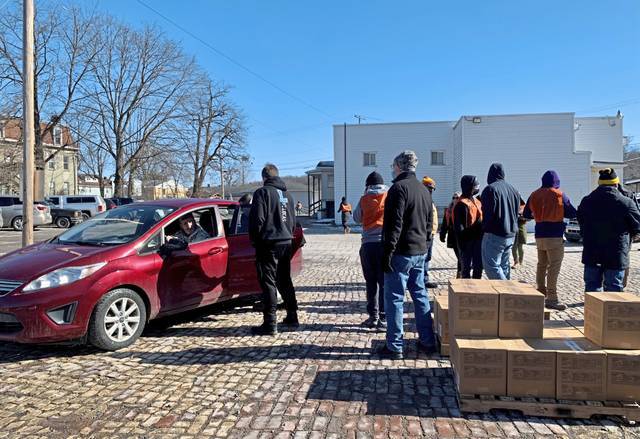Editorial: The telltale lines for food giveaways show all is not well
People are hungry.
It doesn’t seem right in a country that sends more than $140 billion in agricultural products overseas each year and is the world’s largest exporter of food, but it’s true. More than 35 million people were living with regular hunger and another 14.3 million were “food insecure” — a kind of middle ground meaning they aren’t regularly hungry, but an unexpected bill like a car repair or an emergency room visit could push them there.
It works out to one in nine people, and most of them are kids. And those were the figures from before the coronavirus pandemic. Throw the national economy into a viral tailspin and it is easy to tilt the food insecure toward hunger. That’s exactly what happened.
The result was obvious early on with miles-long lines of cars in April waiting for Greater Pittsburgh Community Food Bank distributions. Ten months later, the need is still high.
A Feb. 6 food giveaway in Leechburg, sponsored by Kiski Valley Community Church, illustrated just how great the need is. Cars lined up hours early. By the time the event was supposed to start, the food was gone.
The church’s pastor, the Rev. Todd Pugh, pointed to it as desperation, with people taking no chances that they would waste the trip and leave without that precious box of food. But that created more problems, with early traffic jams ending up in hours of people driving in for an opportunity that was already gone.
Because hunger is always just one part of a very complicated puzzle.
Food is the one expense that people can control. You can scale back from steak to pork chops to hamburger to hot dogs. You can replace your $5 hoagie for lunch with a 50-cent cup of ramen noodles. You can spread the peanut butter thinner and thinner. You can’t do that with the rent or the car payment.
But by the time you have gone from food insecure to hungry, all of the options have been exhausted. You may be behind on the mortgage or have a late notice for the electric bill, but your kids need to eat every day.
Hunger is perhaps the best barometer of the economy. Government agencies or think tanks can spin what the numbers in a jobs report or the stock market or any of the hundred other instruments they have to measure and define economic health. But the number of parents willing to wait hours to get food for their families does lie.
Pugh has adjusted the procedures for the next food giveaway to try to prevent the problems, but that doesn’t change the need. Food banks and churches and other organizations trying to fill that empty spot in people’s lives cannot do it alone.
The Farmers to Families Food Box program that is powering Pugh’s event is a partnership of the USDA and Convoy of Hope. But this is definitely the kind of problem that needs to be solved less by giving out fish and more by making it possible to fish on your own.
Hunger needs to be addressed as more than just a social need — although that should be enough. It has to be approached with the seriousness of fixing other economic problems like tax reform or trade deficits and with the speed and commitment of the debt ceiling. It has to be a priority.
Because people are hungry.
Remove the ads from your TribLIVE reading experience but still support the journalists who create the content with TribLIVE Ad-Free.

